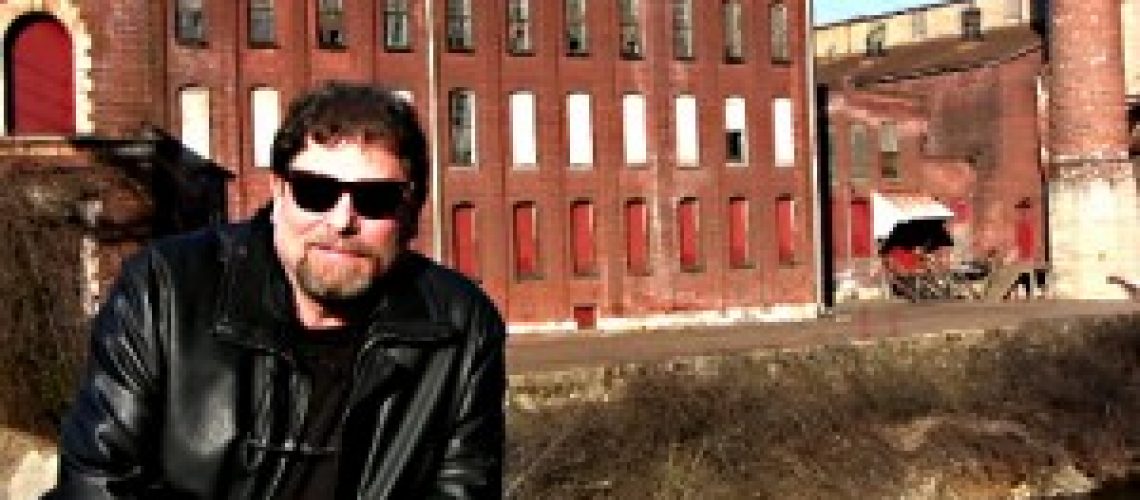
Originally published in The Easton Irregular
By Elizabeth Johnson
Last fall, Luke Wynne created “Everyday”, an NEA-funded exhibition of local architectural photographs, for the “Art of Urban Environments Festival”, a joint project of Lafayette College and the City of Easton. It’s still there, twisty-tied to the chain link fence across the street from the Easton Community Center. “Silk Mill Variations”, 23 images, opened February 15 at the Nurture Nature Center in conjunction with a talk by Gretchen Longenbach titled “Future of the Silk Mill”. Visit the Center and you’ll appreciate how environmental science and the arts complement and reinforce each other. Luke is also working under the auspices of the Mellon Foundation to document Mellon Fellows as they plan and construct sculptures for the Karl Stirner Sculpture Trail that connects the Silk Mill to downtown Easton.
Luke and his wife, film and TV producer Barbara Dorio, came to Easton after living in Italy. He taught portrait photography and master classes at Arte Laterale, Comunicamondo and Il Punto Focale while participating in and curating shows. Luke worked for Take Off International and Prisma Press, documenting personalities from The Bold and the Beautiful and The Young and the Restless in Voici and Télé-Poche. A partial list of actors’ and actresses’ portraits includes Anthony Hopkins, Richard Gere, Whoopi Goldberg, Julia Roberts, Jane Fonda and George Clooney. He’s worked on film and TV productions such as Trouble in the Mind, Slam Dance, Internal Affairs, Encino Man, Rapid Fire, and Dutch as well as for the magazines Interview, Cosmopolitan, New West and Shape.
Luke first shoots a “master”, then medium shots, and later close-ups, the standard process in the film business, which he carries over to his own work. He talks about shooting closer and closer, finding new compositions within the master, surprises within the everyday. In Italy, he photographed the ubiquitous roadside religious shrines; he couldn’t ignore them. His current work is sharp-edged, crisp and geometric. With an intuitive sense of reduction, Luke simplifies an image down to necessary shapes, eliminating people, trash, and bits of grass in the framing process or with Photoshop, always seeking the mysterious, powerful whole. He worked closely with W-Graphics, making highly professional prints of the Silk Mill and remarks that making great prints is an art form itself.
Luke studied at the School of the Visual Arts, New York; Goddard College, Vermont; the New England School of Photography, Boston; and the Pasadena Art Center. He worked with Frederic Ohringer on A Portrait of the Theatre and remembered, “Fred was very laid-back and kept the studio like a 19th century painter’s studio. When I first moved to L.A., I worked for Greg Gorman and it was like the yin to Fred’s yang. It was all high-end rock ‘n’ roll, glitz and glamour…they each showed me different ways to work with people and different approaches to being in the studio. Process and technique– essentials to producing good quality work.” Luke Wynne is, as many photographers were at the time (and still are), influenced by the “New Topographics”, a show that included Robert Adams, Lewis Baltz, Joe Deal, Frank Gohlke, Nicholas Nixon, John Schott, Stephen Shore, and Henry Wessel, Jr. William Jenkins described the photos as “stripped bare of artistic frills, reduced to a topographic state…eschewing beauty, emotion and opinion.” Of the New Topographers, Luke feels the most kinship with Lewis Baltz who shot tough, geometric compositions in black and white and Stephen Shore, the sole participant who shot in color; yet, Luke Wynne carves his own path: where Baltz emphasizes squares, Luke finds rectangles and triangles; and while Stephen Shore isolates saturated color, Luke’s photos are like entering a cathedral.

1 thought on “Artist Profile – Luke Wynne”
I am bookmarking this asap! Thank you very much 😉